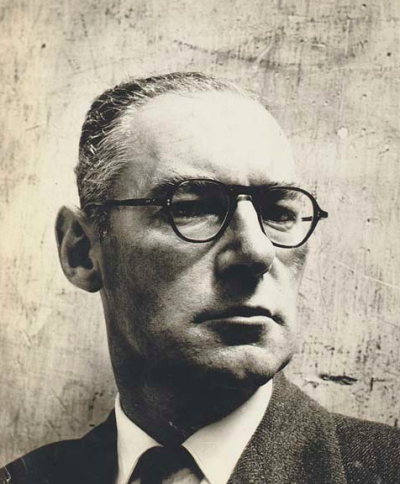

Queer Places:
Havelet House, 181 South Esplanade, St Peter Port, Guernsey GY1 1AN Channel Islands
4 Panton St, London SW1Y 4SW, UK
34 Greek St, London W1D 5DJ, UK
 David Archer (April 15, 1907 – 1971) was a London bookseller,
who, for a time, lived with John Deakin. London in the late
1950s and early 1960s was a place of creativity, of engagement with politics
and society, and a sort of casual generosity mixed with threadbare debauchery. Soho in particular was daily crammed with members of London’s artistic scene:
Francis Bacon, Kenneth Tynan, Michael Hastings and Dom Moraes all jostled for room on the Charing Cross Road with young confident students on the cusp of the swinging
1960s.
David Archer (April 15, 1907 – 1971) was a London bookseller,
who, for a time, lived with John Deakin. London in the late
1950s and early 1960s was a place of creativity, of engagement with politics
and society, and a sort of casual generosity mixed with threadbare debauchery. Soho in particular was daily crammed with members of London’s artistic scene:
Francis Bacon, Kenneth Tynan, Michael Hastings and Dom Moraes all jostled for room on the Charing Cross Road with young confident students on the cusp of the swinging
1960s.
David Archer Alderson Archer was born on 15 April 1907 in Havelet House, St Peter Port, Guernsey, the only child of Samuel Francis Alderson Archer (1871–1957), a retired officer who had served in the Royal Artillery.
Amidst the hubbub of the swinging 1960s, David Archer ran his small, apparently unremarkable, bookshop, there since the 1930s, which according to the poet Christopher Logue, who discusses Archer in his autobiography, was (unusually for the area) ‘clean, sleek and uncluttered’. No 4 Parton Street became a regular haunt for writers, many casually leaving their books with Archer in the hope of shifting a few copies. The ceiling of the shop was covered in portraits of poets – the work of Italian graphic designer Germano Facetti. This was the same ceiling that caught Allen Lane’s eye and eventually took Facetti to Penguin books as designer. Even the girl serving the endless free coffees was the famously beautiful Soho siren Henrietta Moraes, muse to Bacon and wife of Indian poet Dom. Later Henrietta marries John Minton's lover, actor Norman Bowler.
Archer also ran Parton Press, which before the Second World War was the first to publish Dylan Thomas, David Gasgoyne and WS Graham among others. But despite his own significant talent for spotting and publishing important, new poetic work, stories about Archer suggest that he was modest and self-effacing to an almost ridiculous degree.
He was all but disowned by his father, at least in part because of his sexuality. Nevertheless, coming from an elite family who, it was said, owned a third of Wiltshire, he was considerably wealthier than those around him. He used his money to run the shop and the press, and to support the burgeoning talents of those who stumbled in to see him.
Amongst those who visited were Logue and playwright Bernard Kops, both of whom recall Archer with great fondness. Logue writes, ‘David, now quite forgotten, was a man always anxious to help others.’ Similarly Kops remembers that ‘he spoke as if he had two pounds of plums in his mouth and was stiff as a guardsman. […] Here was another wonderful giver, lousy taker.’ Both recall how Archer would encourage people to just take books for free, or if he wanted to hold on to that particular volume, would rush out to buy them a bottle of wine in apology. He often turned customers away with mild disgust when they unsuspectingly proffered the requested price.
Kops goes on to note the seeming disparity between form and function on his first meeting Archer at the shop: ‘This was the man who had started Parton Press, yet when you met him it was as if he had just emerged from a forest and was suffering his first contact with these things called human beings.’
In the 1950s, David Archer was in a relationship with John Deakin. In 1956 Archer's Panton Press bookshop, designed by Germano Facetti, opens at 34 Greek Street; Henrietta, Bruce Bernard and the poet Martin Green all work there. Archer introduces his circle of poets and writers to the club: W. S. Graham, George Barker, David Gascoyne. After meeting Colin Wilson (The Outsider) in Archer's bookshop, Farson announced in the press that a 'post-war generation' of 'angry young men' had emerged. Deakin's first exhibition, Paris, opened at Archer's bookshop.
'One day in 1956,' recalled Bruce Bernard, 'I found myself hanging some remarkable photographs on the walls of the basement gallery under David Archer's bookshop in Greek Street. They were mostly of street scenes in Paris and there were a few extraordinary portraits. Together they seemed to me the most interesting photographs I had ever seen.... Deakin was a very close friend for a time of the quixotic and endearing David Archer (though sometimes as severe as in his marvellous portrait) who gradually sold his family estate to finance his bookshops.'
Like many influential figures from the period (Logue and Kops included), Archer’s personal life was troubled and it is left to Logue to note, sadly, ‘He died alone, in poverty.’
My published books: